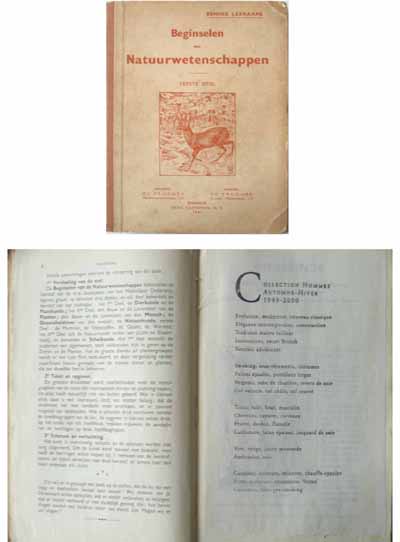Gone Green Long Ago
/Left to right: Martin Margiela, jacket repurposed from vintage scarves, Spring 1992; Martin Margiela, socks, partially constructed sweater, and completed sweater, early 1990s; XULY.Bët, recycled ensemble, Fall 1994
All photos courtesy of the Museum at the Fashion Institute of Technology.
Fashion Projects is very pleased to present an interview with the curators of Eco-Fashion: Going Green, currently on view in the Fashion and Textile History Gallery of the Museum at the Fashion Institute of Technology. Jennifer Farley and Colleen Hill have thoughtfully, and at times provocatively, organized an enlightening and entertaining exhibition about eco-fashion, tracing the movement back over 200 years. The show is based around six themes: fiber origins, labor practices, the re-purposing and recycling of materials, quality of craftsmanship, textile dyeing and production, and the treatment of animals.
This exhibition importantly fulfills a gap in scholarship available about the eco-fashion movement. Recent exhibitions like the one that Francesca Granata and I co-curated at Pratt Manhattan Gallery, Ethics + Aesthetics = Sustainable Fashion, surveyed and tried to make sense of the movement as it exists today, seeking to suggest ways to balance aesthetic needs with environmental stability. However, Farley and Hill have taken a different course. They have used a tough mandate – to chronologically tell the history of fashion over the past two centuries using only the MFIT collection – and ingeniously exposed the ways in which sustainability and fashion have always been intertwined. There are some very special things in the exhibition - besides an arsenic-dyed dress, there is a rare cape made from exotic bird feathers, a man's dressing coat made from a patch-work quilt, and an electric blue fringed cellophane cape from Parisian couturier Lucien Lelong. I wish there would have been some examples of 19th century aesthetic dress, like a robe Jane Morris might have worn, but given the tight constraints of the gallery and the six themes, such a garment doesn't really fit in. For any fashion student or scholar who is interested in sustainability (which is hopefully all of you) this exhibition should be a requirement.
Farley and Hill graciously took a moment out of their day to answer the following questions for Fashion Projects:
Fashion Projects: As you mention in your essay for the exhibition, recently there seems to be a critical mass of exhibitions and writings on the current status of sustainable fashion, but relatively little on its history. What made you both decide to tackle this incredibly important gap in scholarship? Was there anything surprising that you learned?
Jennifer Farley and Colleen Hill: Our general interest in the topic started with the small selection of eco-fashion included in The Museum at FIT exhibition Fashion & Politics (July – November 2009). We discovered that the approaches to eco-design are very diverse, and we began thinking that those varied points of view would be interesting to explore in a historical context. When we intensively researched contemporary eco-fashion, we were surprised to discover very little discussion of fashion’s impact on the environment prior to the 1960s and 1970s. We thought the Museum at FIT’s Fashion & Textile History Gallery, which traces the history of fashion from the 18th century to the present, would lend itself perfectly to an evaluation of the topic.
In researching this topic, we delved into topics ranging from the science of synthetics to mechanization of production to labor regulations. Researching these often very technical subjects helped us to look at fashion from another perspective. We learned that synthetics can have merit in terms of production (i.e. using less water) and recyclability.
We knew the dangers of chemicals, such as chromium used in leather production, but were surprised to discover that the use of large amounts of salt, a seemingly innocuous substance, can also be an environmental concern.
1920s actress Minnie Maddern Fiske's anti-fur stance was also a bit of a revelation. Celebrity activism has become common, but it was amazing to find that such a well-known actress (in her day) had taken a public position more than 90 years ago.
Left: roller-printed cotton dress, circa 1821; right: jacquard-woven silk dress, circa 1830
The Fashion and Textile History Gallery is a wonderful idea in theory (to present fashion in a chronological order around a certain theme using MFIT collections), but seems like it would be very challenging in practice, particularly with its rigid structure and requirement that all objects be from your collections. What were some of the challenges you faced in trying to mount this exhibition?
The gallery can pose a curatorial challenge. In many cases, the 18th and 19th centuries are the more difficult time periods to cover. Surprisingly, in this case, it was significantly easier because of the range of subjects we explore in the exhibition – industrialization, synthetic dyes, and innovative modes of repurposing textiles.
We also needed to acquire contemporary sustainable garments, which required careful consideration as to which pieces we’d like represented not only in the exhibition but also in the museum’s permanent collection. We are very pleased with the selected objects and are grateful to the designers for their positive responses and generosity.
Since all of the garments shown in the gallery must be from the Museum’s collection, I noticed that you acquired quite a number for this exhibition. How many did you acquire? What were your favorite acquisitions?
We acquired 25 new pieces – 7 are accessories, the rest are costume. We are so pleased with everything we have acquired, it’s nearly impossible to choose a favorite. We have wanted to collect Natalie Chanin’s work for some time. We also learned so much from working directly with many of the designers, like John Patrick, who are very committed to sustainable fashion. We also love the Carlos Miele Fuxico gown.
We are pleased to have featured a number of local companies, like Bodkin, naturevsfuture, and Costello Tagliapietra. The museum's Deputy Director Patricia Mears featured Costello Tagliapietra in her recent exhibition – American Beauty: Aesthetics and Innovation in Fashion – and we are thrilled to now have their work represented in our permanent collection.
Carlos Miele, Fuxico gown, Spring 2008
Of the six themes that you identified within the ecofashion movement, did any resonate personally with you? Did you split the choosing of objects by themes or type of objects, or did you choose everything together?
Repurposing. This theme has such deep roots in the history of fashion, and it was amazing to see the ingenuity with which people have reinvented extant pieces. It also was interesting to see the degree to which value is placed on textile objects throughout history and how consumption patterns have changed.
We conferred on every object chosen to ensure the most cohesive selection possible.
I noticed that you placed Stella McCartney’s garments prominently at the opening of the exhibition and that the theme “treatment of animals” was identified often throughout the Gallery. Your label copy also leaned towards an anti-cruelty stance. What are your thoughts on the contemporary use of fur, feathers and leather in fashion?
As curators, we try not to inject personal opinion into our exhibitions. We didn’t intend to pass judgment on those who wear fur, feathers, and leather, but we did want to make our visitors aware of how those materials might be sourced and produced. We hope that our exhibition provokes thought on the production of all types of materials, including various types of fabric. Overall, our aim is to make people think about the origins of all the clothing they wear.
In the contemporary fashion section, there are three examples of garments by British designers Ciel (Sarah Ratty), Enamore (Jennifer Ambrose), and Rebecca Early. You also mention the writings of Sandy Black, a professor at the London College of Fashion. Do you think there is a difference in the way that sustainable fashion is approached and understood in the UK and the USA?
The approach to or understanding of sustainable fashion in the UK and the US is quite similar – these designers are all creative, compassionate people who strive to make a difference in some way. What we found most interesting in the selection of contemporary fashion overall – regardless of nationality – was the difference in approach to eco-friendly design. These differences are readily apparent among the three examples you cited: Sarah Ratty’s dress utilizes the increasingly popular eco-fabric lyocell, Jennifer Ambrose repurposes vintage fabric, and Rebecca Earley’s secondhand shirt is “upcycled.” We found the various approaches to sustainable design to be fascinating, and we tried to express to our visitors that there is no one way to be “eco.”
You broach the idea of slow fashion through your theme “quality of craftsmanship.” Do you think that slow fashion as a movement will catch on? Were you tempted to acquire a fast fashion garment to use as a counterpoint to the quality of craftsmanship thread?
Slow fashion has many positive points. In some ways, the slow fashion movement is reintroducing high levels of craftsmanship and quality that the average consumer has rarely seen, simply because fast fashion is so much more prevalent. Slow fashion is often more expensive by necessity, but we hope that people will realize its benefit as an investment purchase – something that could become an integral part of their wardrobe for many years. Since the average person is so familiar with fast fashion, we didn’t feel it necessary to include something to counterpoint good quality. We also don’t want anyone to feel bad about what they choose to wear – we simply want to educate our viewers about the benefits of more thoughtful consumerism.
NOIR, multilayered evening gown, Illuminati II cotton and silver studded leather, Fall 2010, Denmark, gift of Noir/In Darkness All Colors Agree.
Now that you’ve explored the historic and current state of eco-fashion, where do you think the future of eco-fashion will lead us? Are you more hopeful or less after having gone through this experience?
We’ve received a very enthusiastic response to the exhibition from the contemporary designers who participated, from the media, and from our visitors, which makes us very hopeful about the future of eco-fashion. Since eco-fashion – at least as we perceive it – can be approached in so many ways, any designer or consumer who becomes more conscious of where their clothing comes from – and acts on it – can make an impact. Additionally, many of the designers we worked with emphasized that they want consumers to first see their clothing as chic and fashionable – only later discovering that it is also sustainable. We feel that this “fashion first” attitude is important, and will help to move the eco-fashion movement forward.
The exhibition is open until November 13, 2010.
MFIT
Seventh Avenue at 27 Street
New York City 10001-5992
Information: 212 217.4558
Tues – Fri Noon – 8pm
Saturday 10am – 5pm
Closed Sundays, Mondays, and legal holidays.
Sarah Scaturro

















